Rossmore (Kilmeen)
Houses within 10km of this house
Displaying 61 houses.
Houses within 10km of Rossmore (Kilmeen)
Displaying 61 houses.
| House name | Description | |
|---|---|---|
| Warrensbrook | Richard Donovan was leasing this property to Daniel Donovan at the time of Griffith's Valuation, when it was valued at £14. There is still a house at this site, part of a large farm complex. |
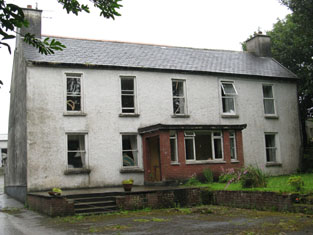
|
| Curraghalicky | Edward Powell was leasing this property to Edward Ellis at the time of Griffith's Valuation, when it was valued at £7 10s. The site is now occupied by substantial modern farm buildings. | |
| The Cottage | A house built after the first Ordnance Survey. Thomas Gillman was leasing this property from George Wiseman at the time of Griffith's Valuation, when it was valued at £11 5s, It is still extant and known as Grove House. |

|
| Rock Castle Mill | John and James Gillman were leasing this property to John Hazel at the time of Griffith's Valuation, when it was valued at £8 and the mill at £52. In 1837 Lewis had noted it as the property of Mr. Heazle. It does not appear on the later 25" Ordnance Survey Map, suggesting perhaps, that it had ceased operations by the end of the nineteenth century. | |
| Lakemount House | Samuel Millner was leasing this property to Benjamin Millner at the time of Griffith's Valuation, when it was valued at £ 6 10s. In 1814 Leet notes Lakemount as the seat of George Beamish. There is still a house at this site. |

|
| Kilcaskan Castle | At the time of Griffith's Valuation, William O'Neill Daunt held this property in fee when it was valued at £32. In 1837 Lewis notes that it was held by Daunt and describes it as " a handsome castellated mansion". Both Taylor and Skinner and Wilson refer to it as a seat of the Daunt family in the 1780s. In 1894 Slater referred to it as the seat of Achilles Daunt. In 1906 it was also owned by Achilles Daunt and valued at £12 10s. The Irish Tourist Association Survey of 1944 referred to it as the residence of Miss M.O'Neill-Daunt. It is still extant. |

|
| Knockaneady | John Beamish was leasing this property to John Schofield at the time of Griffith's Valuation, when it was valued at £6. It does not appear on the later 25-inch Ordnance Survey map of the 1890s. | |
| Ballymoney Glebe House | At the time of Griffith's Valuation, Reverend Robert Meade was leasing this property from the Trinity College estates when it was valued at £23. A slightly different building is labelled "Rectory" on the 25-inch Ordnance Survey map of the 1890s. It is still extent and in use. |
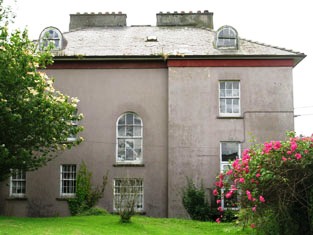
|
| Phale Court | At the time of Griffith's Valuation, Standish Smithwick was leasing this property from William Stanley, when it was valued at almost £8. It is recorded as Phale House on the 1st edition OS Map and as Phale Court on the later 25 inch Map. In 1837, Lewis refers to Phale House as the seat of E.H. Good. In 1914 it was occupied by the Hosford family. In 1786 Wilson refers to it as the seat of John Wade. It is also associated with the Deasy family. |
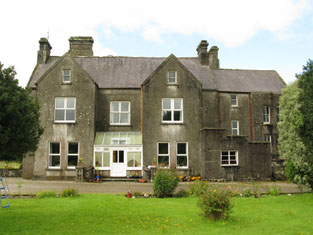
|
| Drombofinny House | Benjamin Daunt was leasing this property from the Devonshire estate at the time of Griffith's Valuation, when it was valued at almost £8. It is labelled Drombofinny House on the 25-inch Ordnance Survey map of the 1890s. A house still exists at the site. | |
| Kilmoylerane House | Richard J. Long was leasing this property from the Devonshire estate at the time of Griffith's Valuation, when it was valued at £15. A house and extensive farm buildings exist at the site. | |
| Roseville | At the time of Griffith's Valuation, Henry Beamish was leasing this property to Bernard Beamish, when it was valued at £16. Henry Beamish was also the owner of a flour mill [W381539] in the same townland, leased to William Norwood, and valued at £150. The mills do not appear on the 25-inch Ordnance Survey map of the 1890s. Roseville is still extant. | |
| Lisbehagh | Sampson Beamish was leasing this property to John Donovan at the time of Griffith's Valuation, when it was valued at £8. | |
| Kill House | Richard J. Long was leasing Kill House from the Attley [?] estate at the time of Griffith's Valuation, when it was valued at £8. There is still a house at the site. | |
| Youghals House | A Miss Walsh was leasing this property from the Earl of Shannon's estate at the time of Griffith's Valuation, when it was valued at £14. This house is still extant. |

|
| The Retreat (Island) | Richard Beamish was leasing this property from Winspur Toye at the time of Griffith's Valuation, when it was valued at £20. A house is still extant at the site. | |
| Kilgarriff House | Henry Bence-Jones, a distinguished physican and scientist, was leasing this property from Rev. Henry Stewart, at the time of Griffith's Valuation, when it was valued at £24 10s. In 1837, Lewis refers to it as the seat of Capt. Davis. A house still exists at the site. | |
| Bushmount | Not visible on the 1st edition Ordnance Survey map but named as Bushmount on the 25-inch edition of the 1890s. Johanna Deasy was leasing this property from the Earl of Shannon's estate at the time of Griffith's Valuation, when it was valued at £22 10s. The Deasy family were brewers in the town of Clonakilty. [Now the site of St. Paul's Nursing Home.] | |
| Fern Hill | AT the time of Griffith's Valuation, this property was being leased from the Earl of Shannon's estate by Anna Atkins. It was then valued at £28. In 1837, Lewis refers to it as the seat of W.F. Atlkin. Now part of the Fernhill House hotel complex. |

|
| Lower Tawnies Cottage | Rev. Henry Stewart was leasing this property from the Earl of Shannon's estate at the time of Griffith's Valuation, when it was valued at £13 15s. Lewis notes it as the seat of the Rev. Dr. Stewart in 1837. It is still extant but unoccupied. |

|
| Millville | Thomas and James Allen were leasing this property from the Earl of Shannon's estate at the time of Griffith's Valuation, when it was valued at £15 and the adjacent mills at £37. The house is still extant. Modern housing now occupies the site of the mill. | |
| Scartagh Cottage | Tradition locally suggests Scartagh Cottage was originally the property of the Townsend family. By the time of Griffith's Valuation, it was being leased by Henry Galway to Matthew O'Hea. Various members of the Galway family held small amounts of land in the area while Matthew O'Hea, of the War Office, London, is recorded as the owner of 70 acres in county Cork in the 1870s. Scartagh Cottage has been replaced by a convent on the 25-inch Ordnance Map towards the end of the nineteenth century and that building is still extant. | |
| Mill House (Ballinascarty) | William G. Harris was leasing this property to Charles Connell at the time of Griffith's Valuation, when it was valued at £7 15s and the adjacent mill valued at £41. It is labelled Mill House on the 25-inch Ordnance Survey map of the 1890s, though the corn mills are labelled disused at that time. A house is still extant at the site though the mills are now ruinous. | |
| Kilnagross | At the time of Griffith's Valuation, William Sullivan was leasing this property to Rev. Somerset Townsend, when it was valued at almost £12. In 1837, it was the seat of Rev. W. Sullivan. It is no longer extant. | |
| Shannonvale House & Mill | At the time of Griffith's Valuation, the Misses Newman were leasing this property to T. & J. Allen, The house was valued at £25 and the mill at £225. Lewis records it as the seat of T. Allin in 1837. The mills afterwards became the property of the Bennett family and later of the Rank company and continued in business until 1963. The house is still extant. In 1786 Wilson refers to a house in this area as "Mount-Shannon, the seat of Dr. Calnan". |
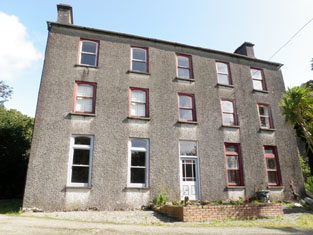
|
| Coolwood House | John Kingston was leasing this property from the Earl of Shannon's estate at the time of Griffith's Valuation, when it was valued at £8. It is not labelled on the 1st edition Ordnance Survey map but appears on the later 25-inch map as Coolwood House. It is still extant and occupied. | |
| Ballyduvane House | Ballyduvane House was held in fee by Mrs. Eliza Beecher at the time of Griffith's Valuation, when it was valued at £25 10s. Lewis refers to it as the seat of M. Becher in 1837. There is still an extant house at the site. | |
| Ballyduvane | Edward Herrick was leasing this property from Mrs. Eliza Beecher at the time of Griffith's Valuation, when it was valued at £12 5s. Lewis refers to it as the seat of E, Herrick in 1837. In 1814 Leet noted it as the residence of Thomas Herrick. Referred to by Slater as the seat of M.A.R. Beecher in 1894. There is still a house at the site. | |
| Springmount or Carhoo House | At the time of Griffith's Valuation, William Beamish was leasing this property from the Earl of Bandon's estate, when it was valued at £11 10s. On the 25-inch map, published in the 1890s, it is labelled Carhoo House. A house and farm buildings are still extant at the site. | |
| Ballyvackey House | Ballyvackey House was held in fee by Mrs. Ellen Alleyn at the time of Griffith's Valuation, when it was valued at £11. In the late 1770s and 1780s it was occupied by the Allen family. It is not shown on the 25-inch Ordnance Survey map of the 1890 and is no longer extant. | |
| Sunmount | George Beamish was leasing Sunmount to Rev. W. John Day at the time of Griffith's Valuation, when it was valued at £20 5s. Lewis refers to Ballyvackey as the seat of G. Beamish in 1837. In 1906 it was owned by William Hungerford and valued at £23. It is no longer extant. | |
| Enniskean Cottage or Mount Lodge | Noted by Lewis as the residence of Rev. W. Sherrard in 1837 and being leased by him from James Gillman in 1851 when it was valued at £12 10s. Later the residence of Orpen Beamish, MD. It is labelled Enniskean Cottage on the 1st edition Ordnance Survey map but as Mount Lodge on the 25-inch map of the 1890s. It is still extant. It was offered for sale in 2023. |
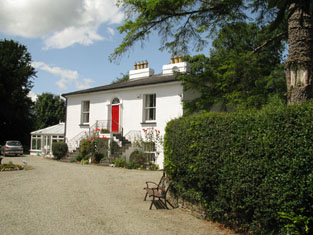
|
| Gardeville | Noted by Lewis in 1837 as the seat of Rev. W. Hall. Leased by Sarah Hosford from the Devonshire estate in 1851 when it was valued at £13. | |
| Carrigmore House (Kinneigh) | James Lysatt [Lysaght] held a property in fee here, valued at £46, at the time of Griffith's Valuation. Bence Jones states that it was built in 1842 by James Lysaght on the site of an earlier house known as Connorville, which had been purchased by Lysaght from the Connor family. In 1837 Lewis had referred to it as "the deserted and dilapidated mansion of the O'Connors." In 1783 Taylor and Skinner had indicated Connorsville as a seat of the Connor family as had Wilson in 1786. An adjacent smaller house, known as Laurel Hill, was held by Adderley Bernard in 1851. Carrigmore House and 312 acres, the estate of James Lysaght, were advertised for sale in July 1853. A lithograph of the house is included in the sale rental. Lyons indicates that the estate was sold privately to James L. Holmes. Carrigmore and Laurel Hill were offered for sale in the Landed Estates Court in 1876, as part of the sale of the Holmes estate. Donnelly states that it was burnt in October 1920 during the War of Independence when it was the property of James H. Morton. The house is now derelict. | |
| Fort Robert (Kinneigh) | Described by Lewis in I837 as a "handsome residence" then occupied by Mrs. [O'] Connor. In 1851 it was leased by George Fuller from Mary Longfield [O']Connor and valued at £18. By the mid 1860s it was in the possession of Thomas Kingston Sullivan. The sale rental of 1867 records that Fort Robert had been "allowed to get out of repair, but is beautifully situated". It appears to have become ruinous by 1890s. The Irish Tourist Association Survey of 1944 stated that the ruin was the property of Judge Henry Connor and also that the house had been associated with Art [O']Connor, United Irishman. | |
| Kilmeen Glebe (East Carbery) | Reverend Edward Alcock was leasing this property from the Ecclesiastical Commissioners in 1851 when it was valued at £23. Lewis notes that there were large plantations around the house in 1837, when it was the seat of Reverend E.H.Kenney. In 1944 the Irish Tourist Association Survey reported that it was then the residence of Rev. Gorman. Buildings are still extant at the site. | |
| Bennetts Grove | Leased by Francis Bennett to William Beazley at the time of Griffith's Valuation, when it was valued at £13 10s. Lewis refers to it as the seat of Herbert Gillman in 1837. In 1814 it was the seat of Francis Bennett. The original house seems to have been replaced by farm buildings. | |
| Caherconway House | Leased by Nicholas Cummins to Daniel Bechinor [or Buchinor] at the time of Griffith's Valuation, when it was valued at almost £8. | |
| Oak Mount (Kilmeen) | Held in fee by James Gillman at the time of Griffith's Valuation, when it was valued at £17 5s. Lewis referred to it as the seat of J. Gillman in 1837. In 1944 the Irish Tourist Association Survey refers to Oakmount as "a substantial farm dwelling". There is still an extant house at the site. | |
| Coolnaconarty House | Held in fee by Herbert Gillman at the time of Griffith's Valuation, when it was valued at £6. Not labelled on the 1st edition Ordnance Survey map but named Coolnaconarty House on the 25-inch map of the 1890s. It is no longer extant. | |
| Millfield House (Ross) | This house, with a mill valued at £40, was leased by William Limerick to Henry Morrow in 1851, when the house was valued at £12 5s. Lewis notes Millfield as the seat of Lieut. Lloyd, RN, in 1837 while it is noted by Leet as the residence of Roger Sweeny in 1814. The mill is labelled Ross Mill on the 25-inch map of the 1890s. There is still an extant house at the site as well as the remains of some mill buildings. | |
| Cahermore House | In 1851 Thomas Hungerford was leasing Cahermore House from the Bishop of Cork's estate,when it was valued at £32. It was owned by Henry Hungerford in 1906 and valued at over £44. Taylor and Skinner's map of 1783 as well as Wilson in 1786 also mention Cahermore as a Hungerford residence. In 1944 the Irish Tourist Association Survey noted that Cahermore had been burnt during the War of Independence and was then derelict. Donnelly indicates that it was burnt in June 1921. It is no longer extant. | |
| Milleen | Rev.William Jennings was leasing this property from the Hungerford estate at the time of Griffith's Valuation, when it was valued at £19 15s. In 1944 the Irish Tourist Association Survey lists Milleen among the houses in the area which had been burnt during the War of Independence and were then derelict. It is no longer extant. | |
| Derry House (Ross) | Family records indicate the original house at Derry was bought by Bryan Townsend, son of Richard, the Cromwellian officer, in the 1680s. This house was a short distance from the current house which was built by Reverend Horatio Townsend in the early years of the nineteenth century and was held in fee by Reverend Chambre Townsend in 1851 when it was valued at £44. Earlier, in 1786, Wilson referred to Derry as a Townsend seat. It was substantially damaged when it was burnt in April 1921 during the War of Independence. . At the time it was the residence of Alexander Sullivan, a well-known barrister. In 1944 the Irish Tourist Association Survey noted that it was still derelict following the 1921 burning. The centre portion of the house and a substantial farm still exist at the site. |

|
| Drinagh Mills | William Scott was leasing a house and flour mills from Hibernicus Scott in 1851 when the buildings were valued at over £40. It is not labelled as a mill on the 25-inch map of the 1890s. Farm buildings exist at the site now. | |
| Kippagh Lodge | Mary Long was leasing this property from John Bryan in 1851 when it was valued at £10+. It is still extant. | |
| Ballymana House | In 1851, James Bryan was leasing this property valued almost £9 from Samuel Townsend. It is labelled Ballymana House on the 25-inch map of the 1890s. It is still extant and occupied. | |
| Ballyhalwick House | Leased by William Norwood from the Townsend estate in 1851 when it was valued at £13. Noted by Slater as the residence of William Norwood in 1894. The original house is not extant. |
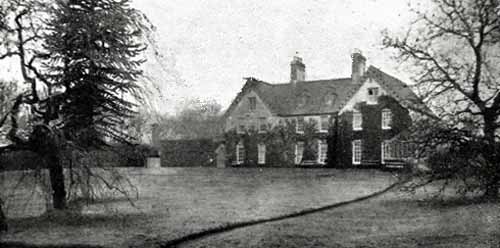
|
| River View (Dunmanway) | Rev.John Meade was leasing this property from William Norwood in 1851 when it was valued at almost £10. Adam N. Meade of Riverview, Dunmanway, owned 529 acres in county Cork in the 1870s. In 1894 Slater records Riverview as the seat of Rev. George Deacon. A house still exists at this site. | |
| Bridgemount House (Dunmanway) | Leased by Daniel Connor Jun. from Daniel O'Sullivan at the time of Griffith's Valuation when it was valued at £10 10s. A house still occupies the site. | |
| Manch | Held in fee by Daniel Connor at the time of Griffith's Valuation, when it was valued at £40. Lewis describes it as "an elegant villa four miles from the town, situated on a terrace, and surrounded with a highly cultivated demesne" in 1837. The Irish Tourist Association Survey of 1944 noted that it was then the residence of Circuit Court Judge Henry L. Connor. Bence Jone notes that the house was gutted by fire in 1963 but afterwards rebuilt. Still in the possession of the Conner family in the late 20th century. |

|
| Brookpark House (Dunmanway) | A property in the town of Dunmanway leased by Martha and Catherine Cox to John Hamilton in 1851 when it was valued at £16. It is still extant and well-maintained. |
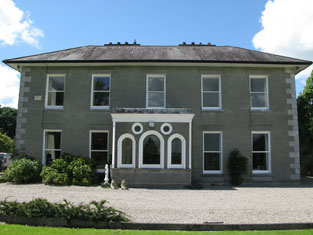
|
| Kilronane | In 1851 Joseph Bennett was leasing this property to John Jago when it and the adjacent mill were valued at £14. In 1837 Lewis referred to it as the seat of N.B. Jagoe. In the 1870s it was a Tuckey residence. There is still an extant house at the site. | |
| Prospect Hill (Dunmanway) | Elizabeth Bryan was leasing this property from the Cox estate in 1851 when it was valued at £22. There is still an occupied house at the site. | |
| Underhill Cottage | Held from Benjamin H. Holmes by William Hayle in 1851 when it was valued at £13. Now demolished. | |
| Cashel House (Kilmacabea) | William Wolfe was leasing this property, then valued at £12, from Miss Wheeler, at the time of Griffith's Valuation. Local records suggest the family were associated with this house since the eighteenth century. The original house is no longer extant and a modern house exists at the site now. | |
| Cloonkeen House (Kilmacabea) | Leased by Sarah Dorman to Florence McCarthy in 1851 when the house was valued at £9. A house still exists at the site. | |
| Westwood/Benduff Cottage | Catherine French held this property from William Morris at the time of Griffith's Valuation. On the 25-inch Ordnance Survey map of the 1890s it is labelled Westwood. In 1906 it was owned by Michael French and valued at £13 10s. There is still an extant house at the site. | |
| Lisselane | Bence-Jones indicates that this house was built by Wiliam Bence-Jones in 1851-53. A small property, owned by the family, had existed there prior to the building of the current house. The house was sold by the Bence-Jones family in 1930. The spectacular gardens are now open to the public. In 2014 the lisselan estate was offered for sale. See www.lisselan.com. |

|
| Castle Salem | This property had formerly belonged to the McCarthys but was acquired by William Morris and re-named Castle Salem. In 1786 Wilson refers to it as the seat of the Morris family but by the publication of the first Ordnance Survey Map it is labelled "Benduff Castle or Castle Salem, in ruins". This property, developed over several centuries, is still extant and occupied. |
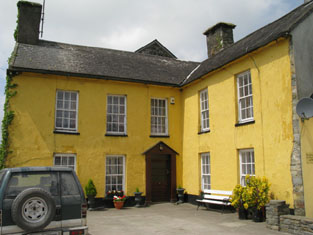
|
| Ballynagornagh House | In 1786 Wilson refers to "O'Barley-Hill" as a seat of Mr. Morris. At the time of the publication of the 1st Ordnance Survey the original Ballynagornagh House is described as "in ruins". However, a house has been restored on the site by the 1890s when it appears on the 25-inch Map. At the time of Griffith's Valuation, the townland was still in the possession of the Morris family though much of it was leased to the Donovans. The house was valued at £4 5s. A substantial farm occupies the site now. |

